All around the world, the sound of cowbells indicates the presence of livestock nearby, but in the streets of the municipality of La Frontera, they announce the arrival of some very different beasts. Los Carneros de Tigaday is a singular festive tradition whose origins are lost in the mists of time, and which came very, very close to disappearing forever.
If there is one festival in the Canary Islands that is celebrated with intensity, without a shadow of a doubt it is Carnival. Year after year, each island combines music and costumes with rituals deeply rooted in local culture. This is the case of Los Indianos on La Palma, Los Diabletes in Teguise and the Carneros de Tigaday, one of the main symbols of the El Hierro carnival troupe.
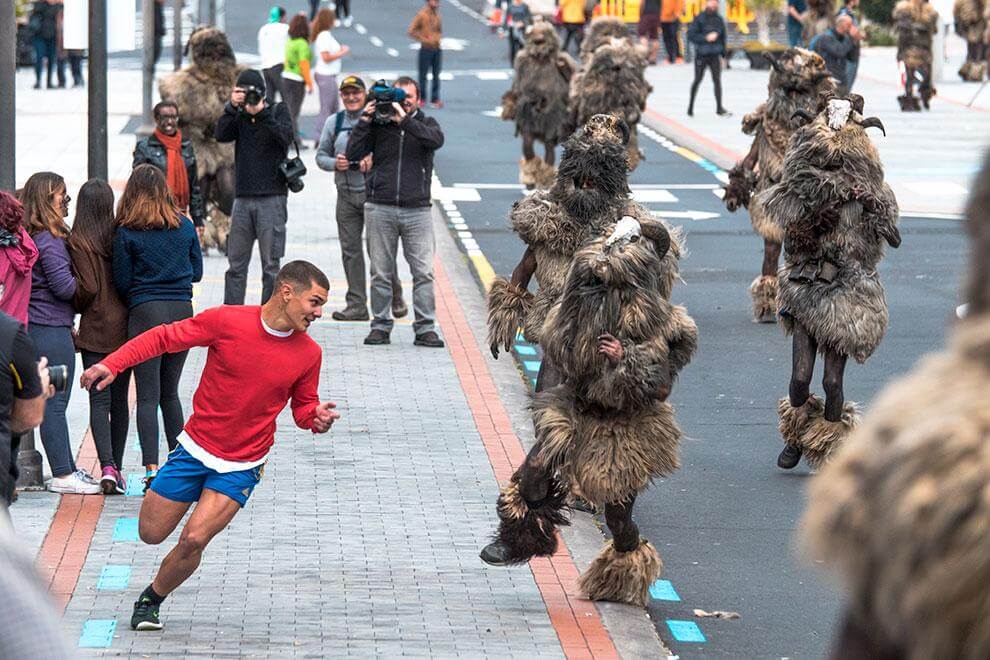
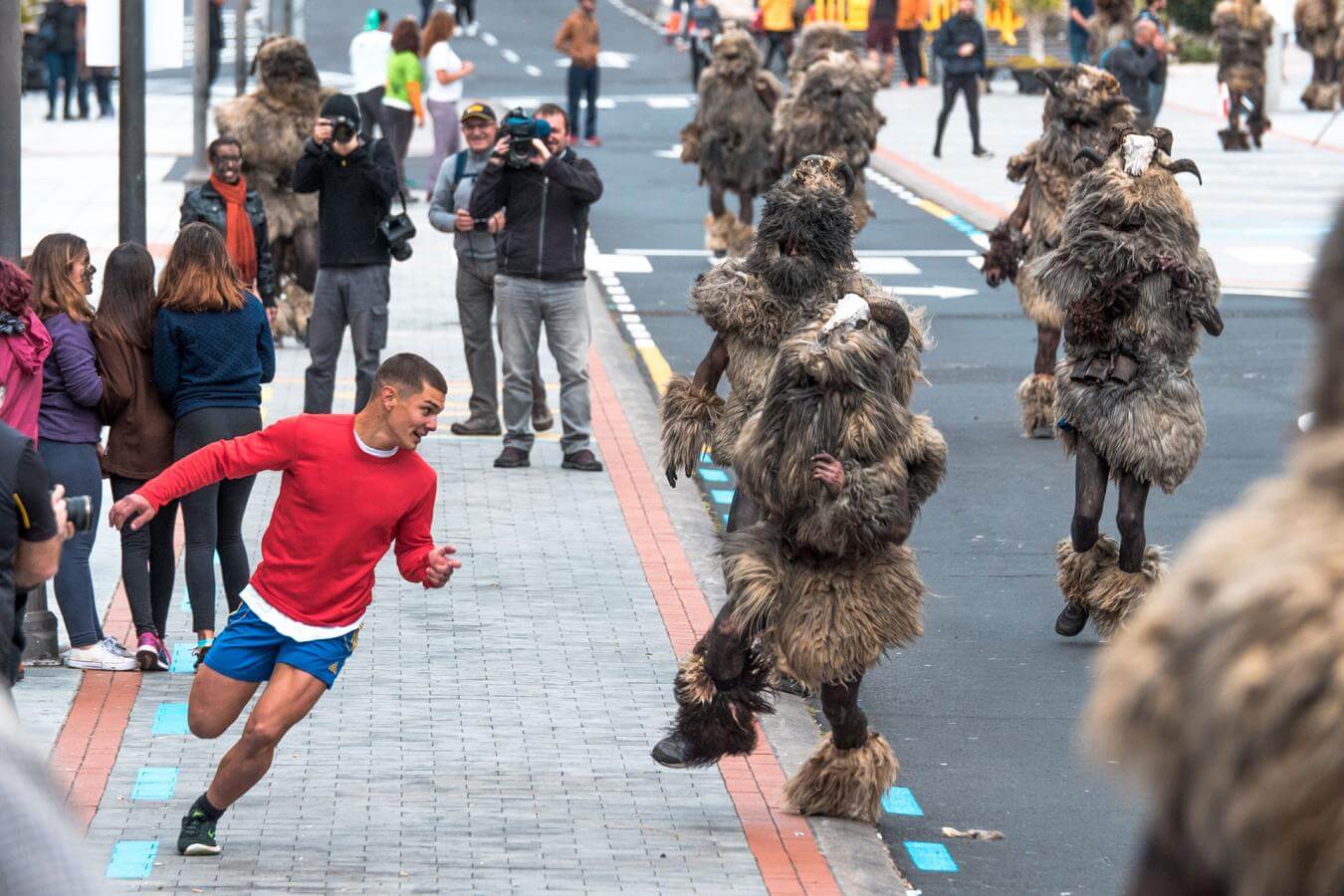
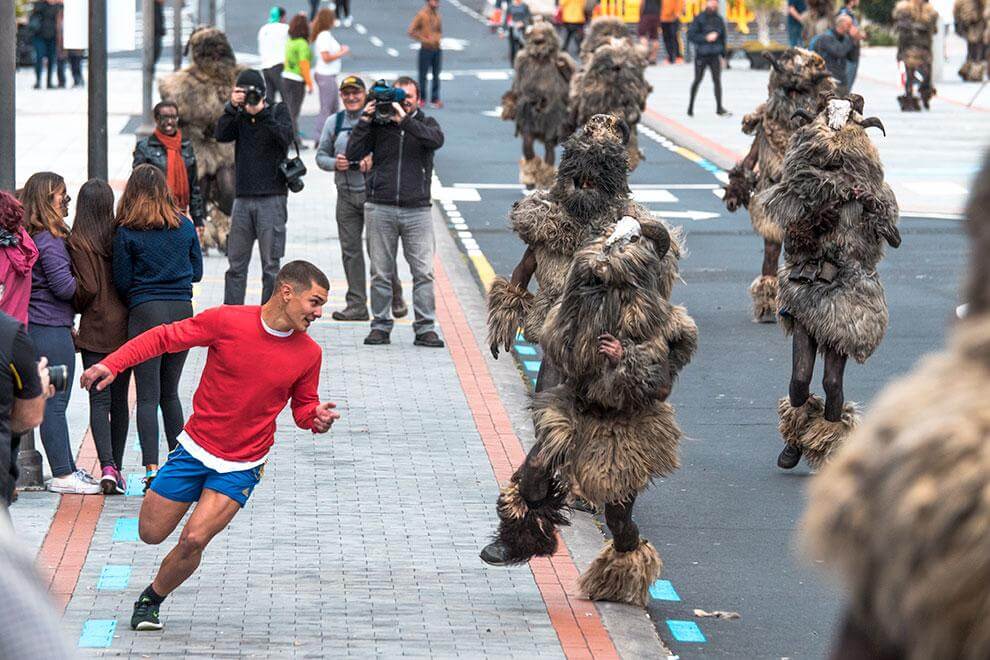
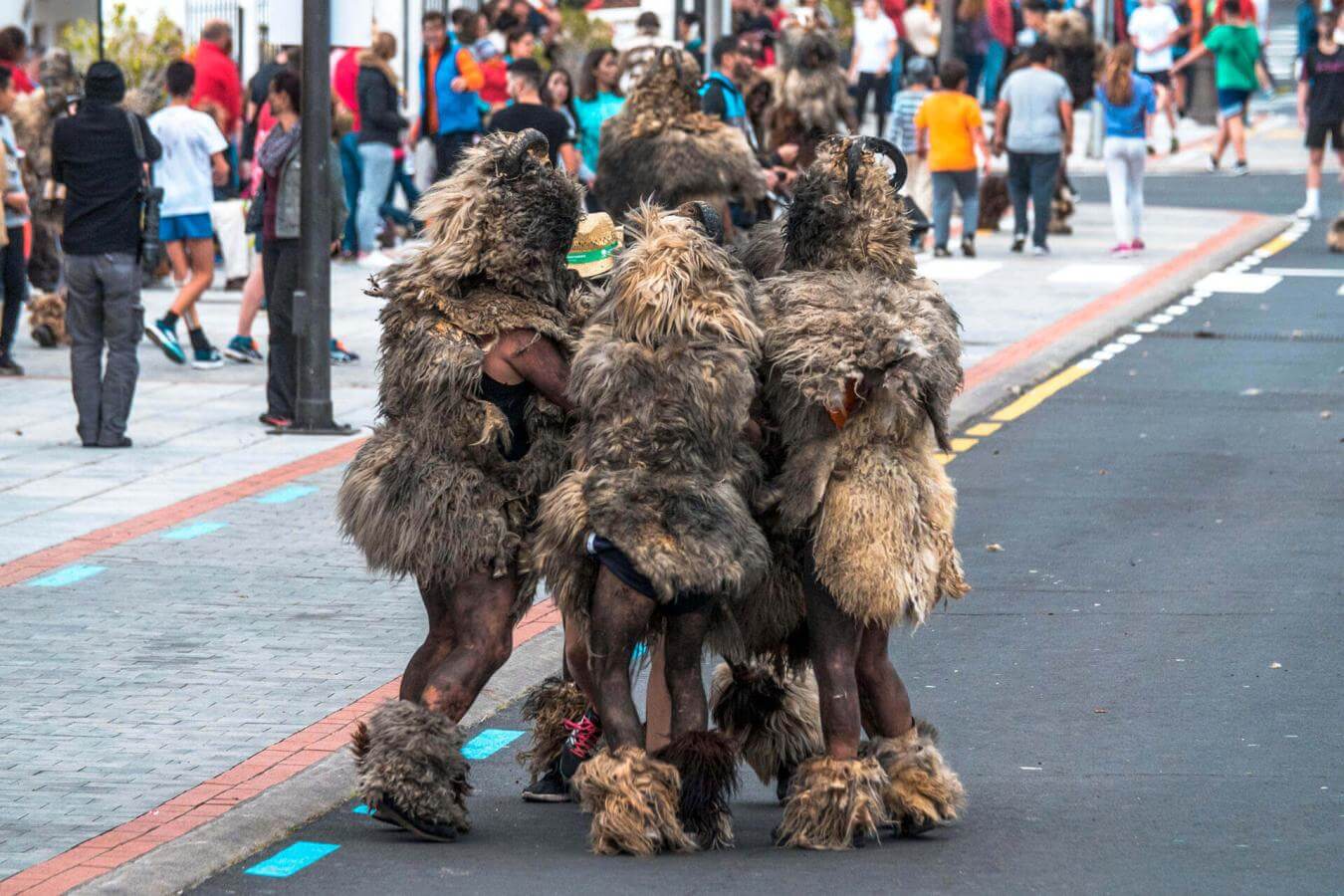

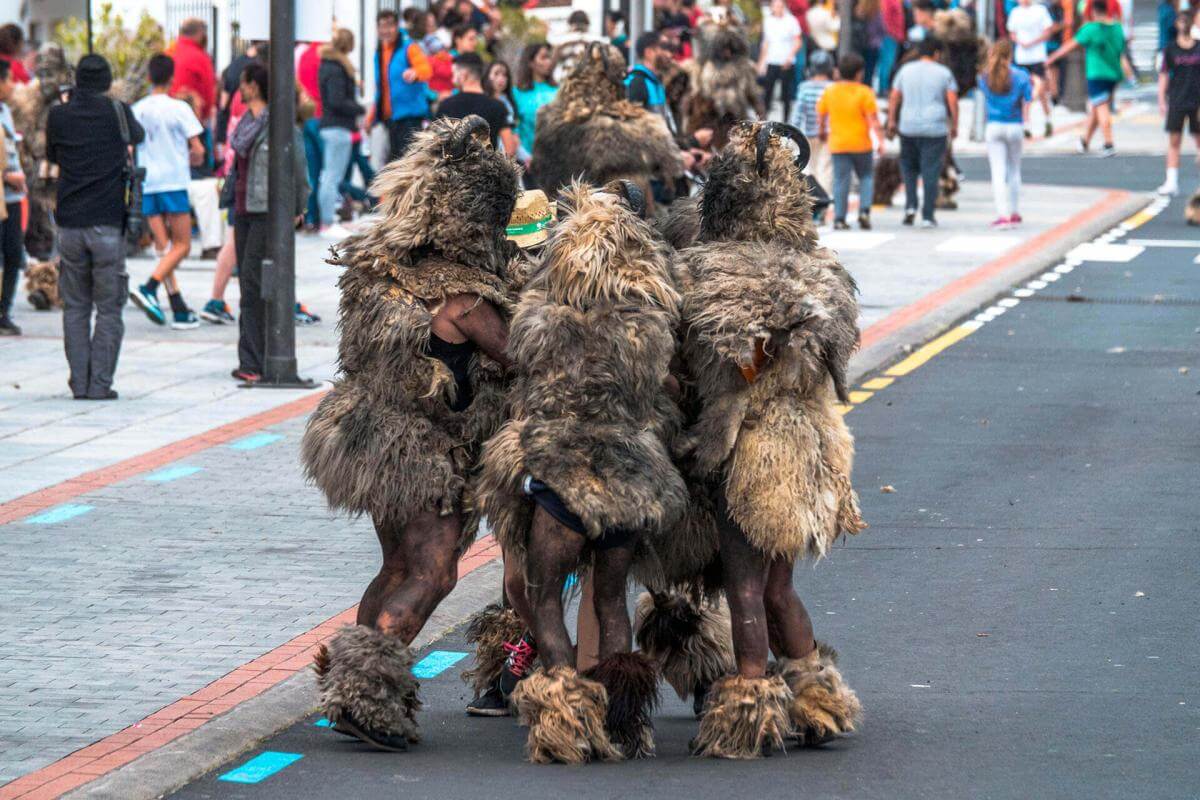
A simply spectacular display
The traditional costume consists of several kilos of sheepskin from native sheep or rams, which are used to cover the entire body. Added to this are horns and bells, as well as a coating of shoe polish that serves a dual purpose: to blacken the skin, and to stain the more absent-minded onlookers, making the audience laugh. Because as the popular saying goes, if you don’t want to end up covered in shoe polish, it’s best not to go at all.
Los Carneros de Tigaday never perform alone. The usual grouping consists of several dozen young people led by the extravagant figure of the shepherd or the madman, who is dressed in chains in order to make noise and warn the population. The experience becomes a fun chase that can last for hours, and in which both locals and visitors participate.
A tradition that was reborn from the ashe
Although no document or evidence has yet been found to mark the origins of Los Carneros de Tigaday, it is believed to be part of the pagan beliefs that once inhabited the archipelago, intertwined over the years with the island’s pastoral past.
What is certain is that it very nearly disappeared. During the Spanish Civil War this tradition fell into oblivion. It would have died out altogether had it not been for a local hero, Don Benito Padrón Gutiérrez, who in 1940 set out to bring Los Carneros de Tigaday back to the streets of his native Frontera.
First with residual ink made from what was left over in cauldrons, and later with shoe polish, Don Benito helped the people of El Hierro to once again smear themselves with ink and dress in skins, which he himself kept in the cellars of his house, until he was 90 years old. To honour him, a street and a square in the town now bear his name, although the tribute that would probably make him the happiest is the fact that his home, now known as “La Casa del Miedo”, is the habitual gathering and departure point for Los Carneros year after year.
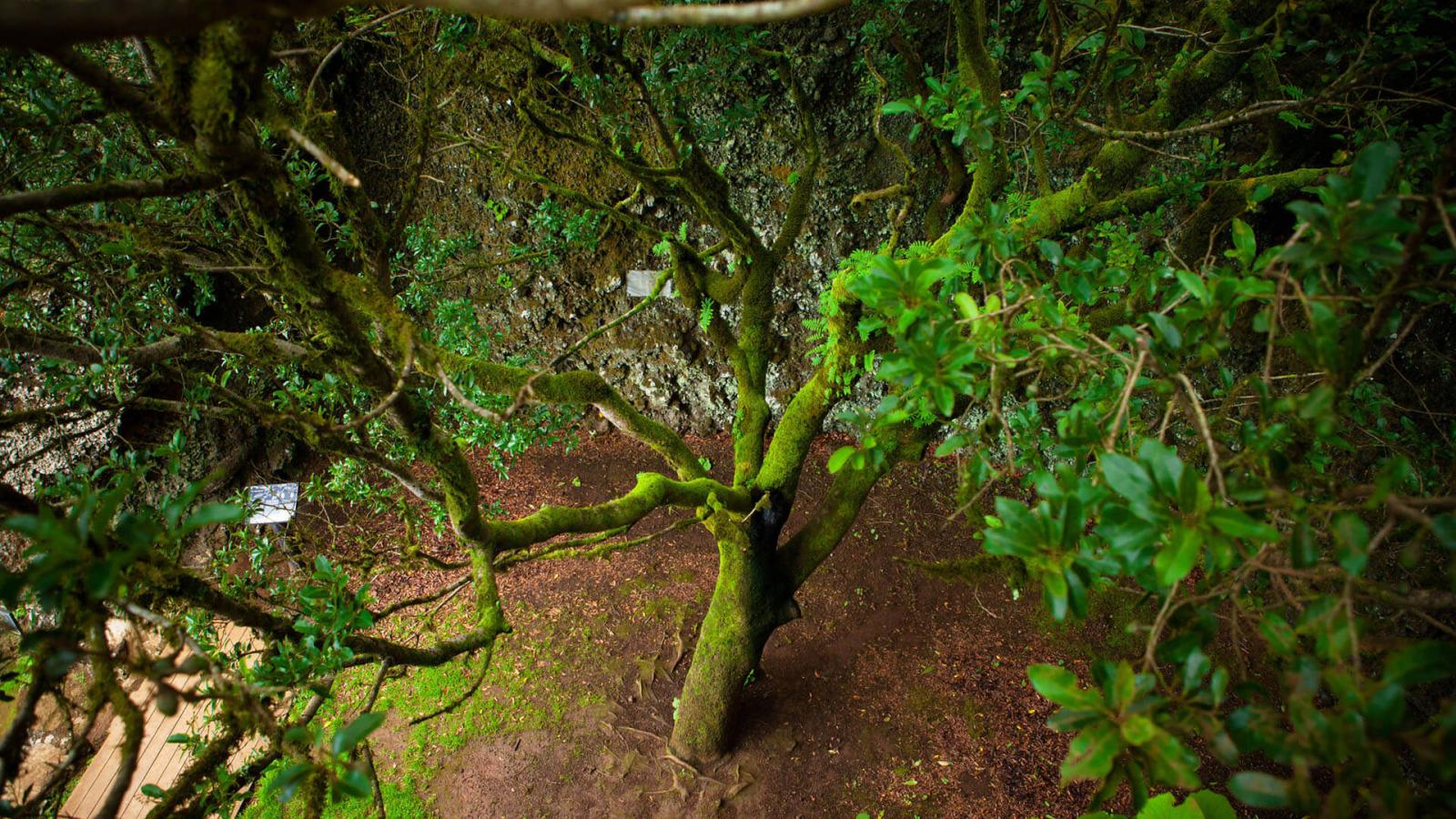
An island history every bit as wild as its nature
Although it may seem paradoxical, the youngest island in the Canary Islands archipelago has a great deal to tell, see and explore. This is the case of the Garoé, a sacred tree that saved the island’s first settlers from dying of thirst, the twisted junipers, the seabed and the El Julan Cultural Park, whose stones bear ancient indigenous messages. Because not all history is found in books or on the internet.


